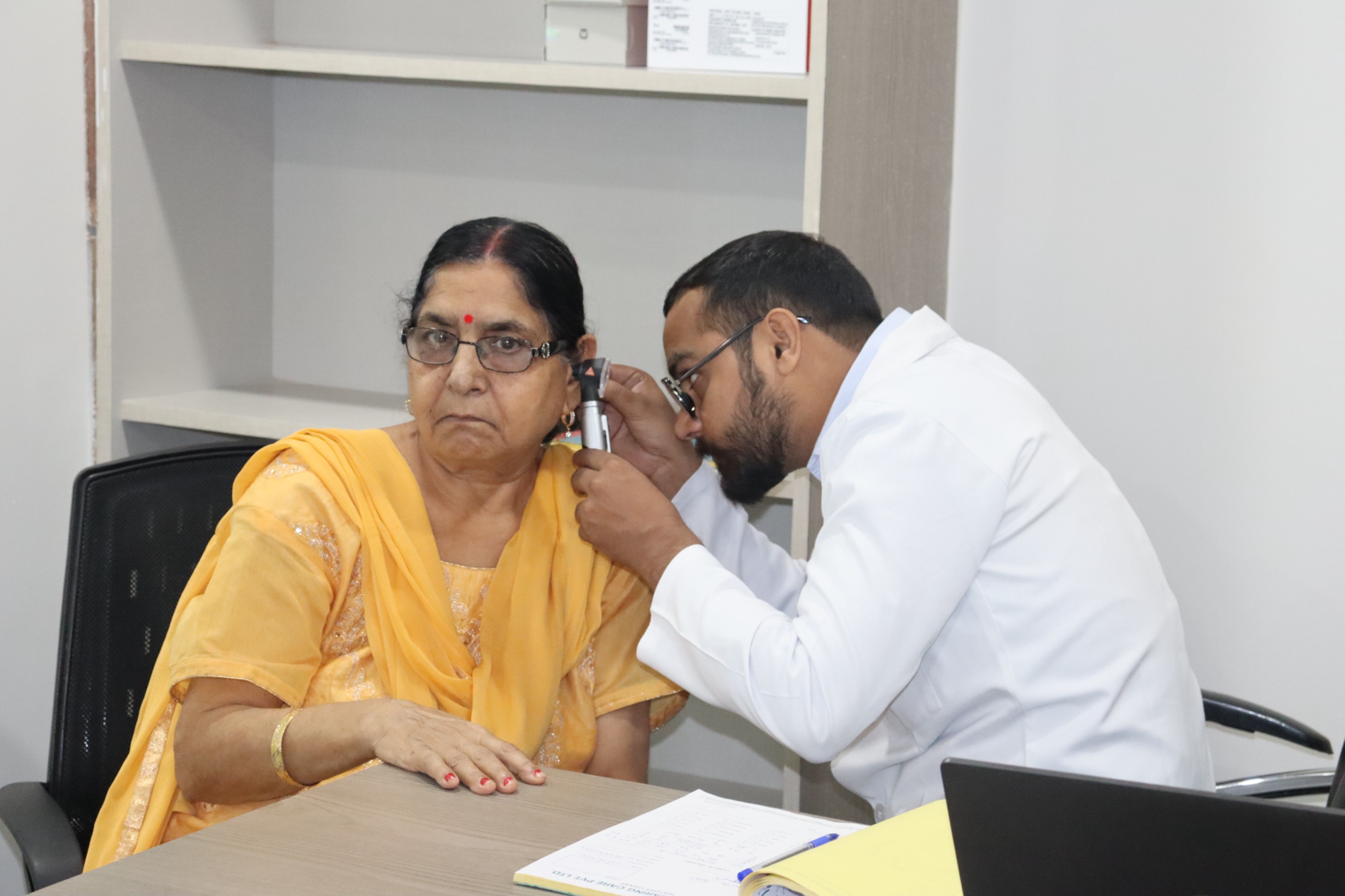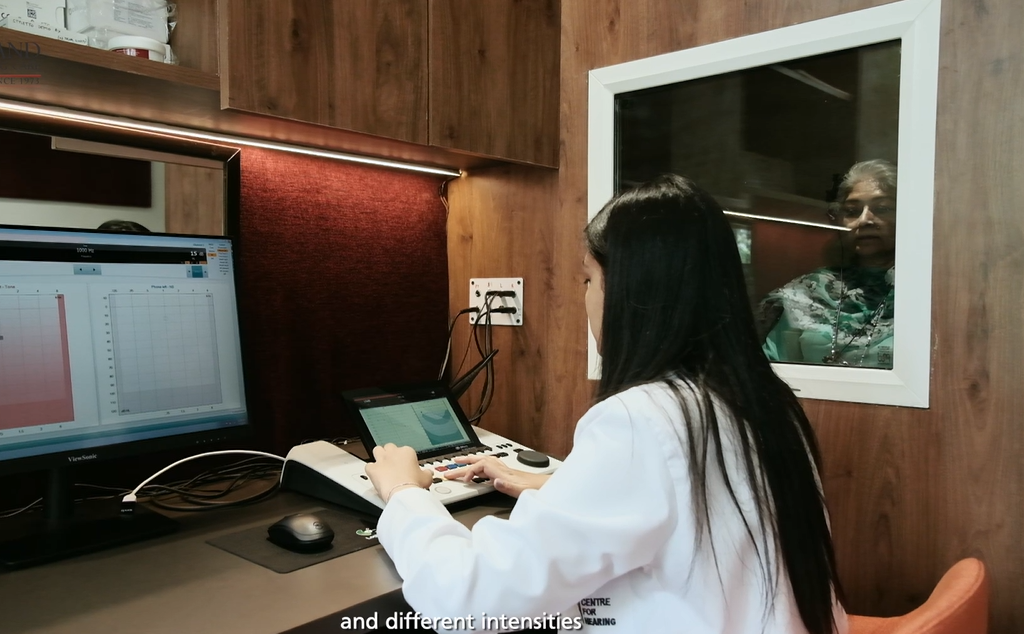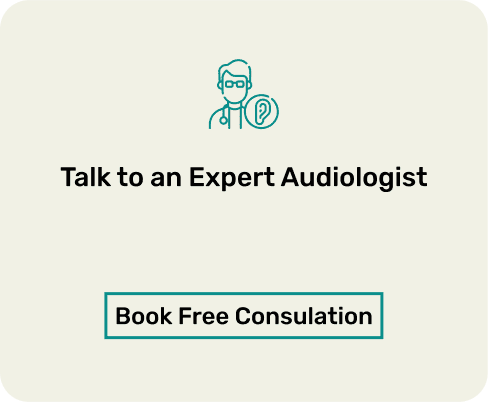According to WHO, approximately 63 million people suffer from significant auditory impairment and hearing loss in India, which makes the percentage of people with hearing challenges 6.3%. Hearing loss can occur for numerous reasons, the most common being a disease, ageing, exposure to loud noise, hereditary, poor diet, head trauma, accident, etc. Though in many cases curing hearing loss cannot be possible, interventions like hearing aid can at least restore the ability to hear. Early diagnosis can prevent further degeneration. Therefore it is advisable to get your condition diagnosed by an ENT specialist who may advise you to visit an audiologist for some hearing loss tests. One reliable hearing loss test that gives accurate results is the Pure Tone Audiometry (PTA) test.
In this article, you will find a detailed discussion on a PTA test, its methods, and the best test centres in India.
What is a PTA Hearing Test?

PTA, or the Pure Tone Audiometry test, is a behavioural test to assess a person’s hearing sensitivity. It is the most common hearing test; however, there are some other tests as well, which are listed below:
1. Speech Perception and Word Recognition
During this test, your audiologist will ask you to repeat a series of words that will be played through headphones or speakers. The audiologist can also speak it. The audiologist would analyse how well you can recognise the correct words in different situations like low voice, amplified voice, and background noise.
2. Tuning Fork Test
It differentiates between conductive and sensorineural hearing loss. A tuning fork is a metallic device that, when tapped on a hard surface, produces a sharp, specific tone. The audiologist may use it after tapping it and holding it at various places near your head to assess if you can hear the voice. The tuning Fork test is generally used to diagnose the type of hearing loss.
3. Tympanometry
This test assesses the normal functioning of eardrum movement and the signs of problems in the middle ear.
However, the PTA test delivers highly accurate results among all these tests.
Why Should You Undergo a PTA Hearing Test?
PTA test is a diagnostic procedure to measure the threshold of a person’s hearing ability, the level of hearing loss in a person, and the type and configuration of hearing loss.
It is also used to assess balance issues and other defects in the inner ear. Hearing loss can range from mild to moderate, moderately severe, and severe to profound hearing loss. The PTA hearing test measures the degree of impairment.
How is a PTA Hearing Test Done?

PTA hearing test is a painless procedure that takes around half an hour to an hour to finish. The following steps are involved in this test:
- Step 1: First of all, you will be asked by your audiologist to wear earphones attached to the audiometer.
- Step 2: The audiologist will deliver pure tones of a specific frequency and volume to both ears.
- Step 3: You would be expected to show a signal when you hear a sound.
- Step 4: Based on your response, your minimum hearing threshold would be measured and depicted on a graph to assess the percentage of hearing loss in either of the ears.
Benefits of the PTA Hearing Test
The PTA hearing test is the gold standard of hearing function tests and the most preferred hearing test among hearing professionals because of its high accuracy.
Here are some of the benefits of the test:
1. Early Detection of Hearing Issues
Most individuals overlook initial hearing changes, attributing them to temporary conditions or natural ageing. PTA testing identifies hearing problems before they become noticeable in daily life, enabling prompt intervention when treatment is most effective.
2. Ongoing Hearing Monitoring
Routine PTA assessments create a comprehensive hearing profile over time. This allows audiologists to identify gradual changes and recommend appropriate measures such as hearing aids, protective equipment, or medical consultation before significant deterioration occurs.
3. Tailored Treatment Solutions
PTA results provide precise data about your specific hearing patterns and loss configuration. This detailed information enables audiologists to recommend the most suitable treatment approach, whether hearing aids, rehabilitation therapy, or medical intervention.
4. Proactive Hearing Protection
Understanding your current hearing thresholds empowers you to make informed lifestyle choices. You can avoid potentially damaging noise exposure, use appropriate ear protection in noisy environments, and seek early treatment to preserve your remaining hearing capacity.
Some Aspects to Consider Before a PTA Test
There is no significant preparation and caution needed before going for the test. However, there are some basic things which the patient must keep in mind:
Stay Alert and Responsive
The accuracy of the PTA test depends entirely on your responses during the assessment. Ensure you remain attentive and focused throughout the procedure, as your reactions determine the reliability of the results.
Check for Earwax Buildup
Excessive earwax can significantly affect hearing test outcomes. If you suspect a blockage or have noticed reduced hearing, consult your ENT specialist or audiologist beforehand to have your ears professionally cleaned.
Avoid Testing During Illness
If you have a cold or nasal congestion, postpone your test. These conditions can cause mucus buildup in the ear canal, temporarily affecting your hearing and potentially leading to inaccurate results that don’t reflect your true hearing ability.
Clarify the Procedure
Don’t hesitate to ask your audiologist about the test procedure and any specific recommendations they may have. Understanding what to expect helps ensure you can participate effectively and achieve the most accurate assessment.
Who Should Get a PTA Test?
Regular hearing assessments are particularly important for certain groups who face higher risks of hearing loss:
Age-Related Hearing Changes
Adults above 40 should consider regular PTA testing, as age-related hearing loss (presbycusis) typically begins in the fourth decade of life and progresses gradually.
Occupational Noise Exposure
Individuals regularly exposed to loud environments, including musicians, factory workers, construction personnel, and airport staff, should undergo routine hearing assessments to monitor potential noise-induced hearing damage.
Medical Conditions
People with diabetes, hypertension, or cardiovascular conditions face increased risk of hearing loss due to reduced blood flow to the inner ear structures.
Social Hearing Difficulties
Those who struggle to follow conversations in crowded environments, restaurants, or group settings may benefit from comprehensive hearing evaluation to identify underlying issues.
Hereditary Risk Factors
Individuals with a family history of hearing loss should consider proactive testing, as genetic factors can predispose to various types of hearing impairment.
How Often Should You Get a PTA Test?
If you fall into any high-risk categories, schedule PTA testing every 1-2 years to track changes and enable early intervention when necessary.
Seek prompt hearing assessment if you notice any of these warning signs:
- Frequently asking others to repeat themselves
- Consistently increasing television or radio volume
- Difficulty understanding speech in noisy environments such as restaurants or social gatherings
- Feeling that others are mumbling or speaking unclearly
Book Your PTA Test Today!
At Center for Hearing®, we offer advanced hearing assessments using the latest PTA equipment. Our expert audiologists ensure you receive the right care, at the right time.
Also, with our pan India network of hearing centres and 50+ expert audiology professionals, we ensure that you get the best assistance related to hearing loss issues and audiometry tests.
Call us at +91-9811227269 or find your nearest Center for Hearing® clinic and get started with the necessary procedures today!



















